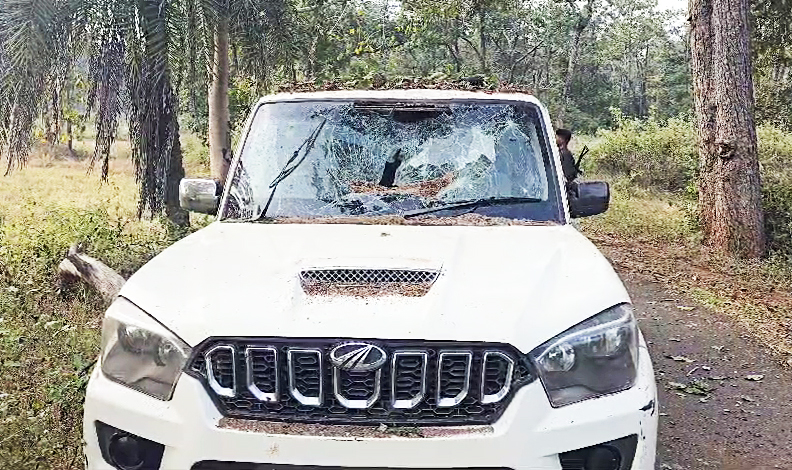The attacks underscore critical failures in operational procedures and highlight the Naxals’ evolving tactics.
New Delhi: The recent killing of eight Chhattisgarh security personnel from the District Reserve Guard (DRG) and Bastar Tigers, along with a civilian who was driving their private vehicle, in a landmine Improvised Explosive Device (IED) blast—marking the second such attack in the past two years—has raised serious concerns. The incident highlights two main issues: the failure of senior officials to enforce Standard Operating Procedures (SoPs) on the ground, and the continued reliance on outdated tactics that have proven ineffective in preventing targeted attacks by Naxals.
The recent deaths will also deal a blow to the state government, which has been ‘celebrating’ the record number of Naxals it claims to have killed over the past year, with reports suggesting 217 deaths.
All eight of the victims were former Naxals who had been inducted into the DRG and Bastar Fighters, both units of the state police. Their vehicle was targeted near Ambeli village under the Kutru police station in Bijapur.
The 6 January attack mirrors a similar one in April 2023, when ten security personnel and a civilian driver were killed after their vehicle was blown up by Naxals in Dantewada. Sources said that while pro-government voices will dismiss the recent attack as a ‘one off’ incident , the fact remains that security agencies have faltered, and Naxals still
Perhaps the biggest concern in North Block is the repeated mistakes made by the Indian Police Service (IPS) officers posted in the Naxal-affected zone. In both the recent attack and the April 2023 incident, standard operating procedures were violated.
After the April 2023 killings, the state police announced four-wheelers would no longer be used, and a Road Opening Party (ROP) would be deployed during anti-Maoist operations. They claimed that, since it was a covert operation, the same was not deployed as the ROP would have warned the Naxals.
However, in the 6 January attack, neither the ROP effectively carried out its duties nor did the police adhere to their own decision of avoiding four-wheelers. The eight killed were part of a team that had earlier neutralised five naxals in a two-day operation and were travelling back in a white SUV when the attack took place.
In the April 2023 attack, Naxals had planted around 50 kg of explosives by digging a foxhole tunnel beneath the road ahead of the attack. Since the IED had been in place for several months, the connecting wire to the trigger, which needed to be manually activated when the targeted vehicle passes through, was covered with grass that had grown during the ensuing time period.
A similar scenario played out on 6 January at a different place, with the Naxals waiting near the IED location and detonating the device when the vehicle passed by.
A proper ROP process should have detected the presence of Naxals in time to prevent the attack. Under the supervision of senior officials, who typically don’t go to the ground, ROP teams are tasked with ensuring the safe movement of convoys and personnel in conflict zones, particularly in areas prone to IEDs and ambushes.
These operations consist of multiple phases, including planning and intelligence gathering, which involves route analysis and risk assessments, as well as pre-movement preparations such as equipment checks, and the deployment of detection tools. Route clearance is also a key phase, involving the detection and neutralisation of threats, often supported by infantry.
The final phase of convoy movement, ensures safe passage using electronic countermeasures and tactical formations. Key components of these operations include IED detection and disposal, security and surveillance (which may involve UAVs and snipers), and the use of electronic countermeasures to jam remote IED triggers.
Officials say that the ROP process, when executed properly, reduces the chance of accidents significantly, but challenges remain due to long-planted IEDs, that remain operational due to durable materials and clever concealment by the Naxals.
To counter this, officials rely on ground-penetrating radar, robotics, and multi-sensor detection tools, as sniffer dogs are unable to detect IEDs buried deeper than 3 to 4 feet underground. Over time, officials say, the Naxals develop a keen understanding of the police’s response strategies. As a result, they patiently observe these changes and adapt their tactics for future attacks. This could explain the gap of almost two years between the two IED attacks in Chhattisgarh.
According to officials, even a single IED attack has the potential to create a long-lasting impact on the security personnel operating on the ground. The psychological fear of IEDs causes “IED-related anxiety”, significantly affecting the operational activities.

